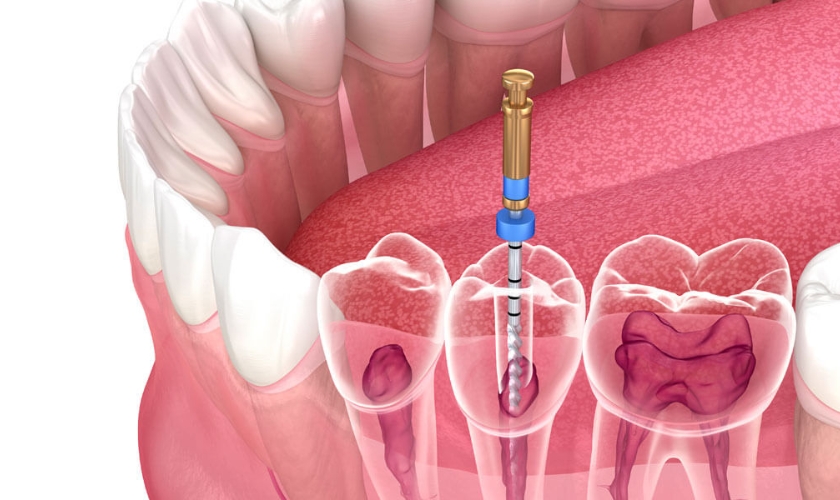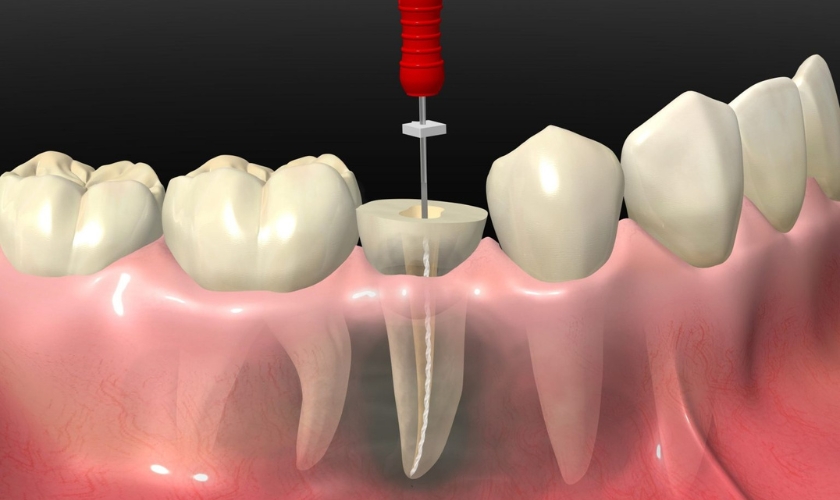
By Gentle Touch Dentistry Richardson
Root canal therapy is a common dental procedure that saves teeth by removing infected pulp and cleaning the root canals. While highly effective, there’s a slight chance of an infection developing after the procedure. If you suspect an infected root canal, seeking prompt professional help from a Richardson dentist is crucial. This guide equips you with the knowledge and steps to navigate this situation effectively.
Recognizing the Signs of an Infected Root Canal
Early detection of an infected root canal allows for timely intervention and prevents complications. Here are some telltale signs to watch out for:
- Persistent pain: Throbbing or sharp pain around the treated tooth, often worse when chewing or applying pressure.
- Increased sensitivity: Heightened sensitivity to hot and cold beverages or food.
- Swelling and tenderness: Noticeable swelling in the gums or face near the affected tooth, accompanied by tenderness to touch.
- Visible pimple on the gums: A small pimple or bump near the tooth, potentially draining pus, indicating an abscess.
- Discoloration of the tooth: The treated tooth may appear darker than surrounding teeth.
- Unpleasant taste or odor: A foul taste or bad breath can arise from the infection.
Taking Action: What to Do if You Suspect an Infection
If you experience any of the above symptoms, don’t hesitate to contact your Richardson dentist or a Root Canal Therapy in Richardson specialist. Here’s what to do:
- Schedule an appointment: Call your dentist and explain your symptoms in detail. Emphasize the urgency of the situation and request an appointment as soon as possible.
- Manage pain (temporarily): While waiting for your appointment, over-the-counter pain relievers like ibuprofen or acetaminophen can offer temporary relief.
- Maintain good oral hygiene: Continue brushing your teeth twice daily and flossing regularly to prevent further bacterial growth. However, avoid applying excessive pressure on the affected area.
- Avoid chewing on the affected side: This minimizes further irritation and potential damage to the tooth.
Treatment Options for Infected Root Canals
During your appointment, our best dentist will thoroughly examine the area, potentially take X-rays, and confirm the diagnosis. Based on the severity of the infection, they will recommend the most suitable treatment option. Here are the two main approaches:
- Root canal retreatment: This is the preferred option in most cases. It involves reopening the tooth, removing any remaining infected material, cleaning the canals again, and placing a fresh filling and permanent crown.
- Tooth extraction: If the infection is severe or the tooth is too damaged, extraction might be necessary. This would be followed by discussing options for replacing the missing tooth, such as implants or bridges, to restore functionality and aesthetics.
Ensuring Optimal Oral Health after Root Canal Treatment
Following a successful root canal treatment, whether initial or retreatment, it’s crucial to prioritize good oral hygiene habits:
- Brushing twice daily: Use a soft-bristled toothbrush and fluoride toothpaste to remove plaque and bacteria.
- Flossing once daily: Flossing reaches areas inaccessible to brushing, removing trapped food particles and bacteria.
- Regular dental checkups: Schedule regular checkups and cleanings with your Richardson dentist to monitor your oral health and prevent future issues.
By following these steps and maintaining good oral hygiene, you can significantly reduce the risk of experiencing an infected root canal and ensure long-term oral health. Remember, early detection and prompt professional intervention are key to successfully addressing infected root canals and preserving your smile.
Frequently Asked Questions
Can I treat an infected root canal at home?
No, attempting to treat an infected root canal at home is not recommended. Antibiotics may be helpful alongside professional dental treatment, but over-the-counter medications alone won’t eliminate the infection. Seeking prompt dental care is crucial to prevent further complications.
What happens if I don’t get an infected root canal treated?
Delaying treatment for an infected root canal can lead to serious consequences. The infection can spread to surrounding tissues and bones, causing pain, swelling, and even bone loss. In severe cases, it can become life-threatening. Early intervention is essential to prevent these complications.
What are the chances of needing a retreatment for an infected root canal?
Root canal retreatment success rates are generally high, with studies suggesting a 70-90% success rate. However, the success rate can vary depending on the severity of the infection and other factors. Your dentist will discuss the likelihood of successful retreatment during your consultation.




